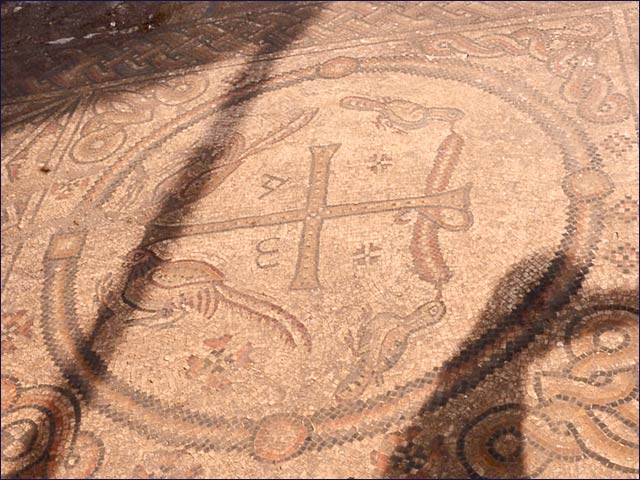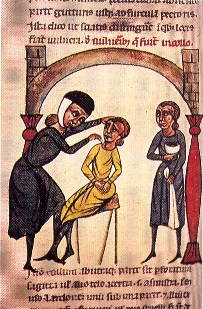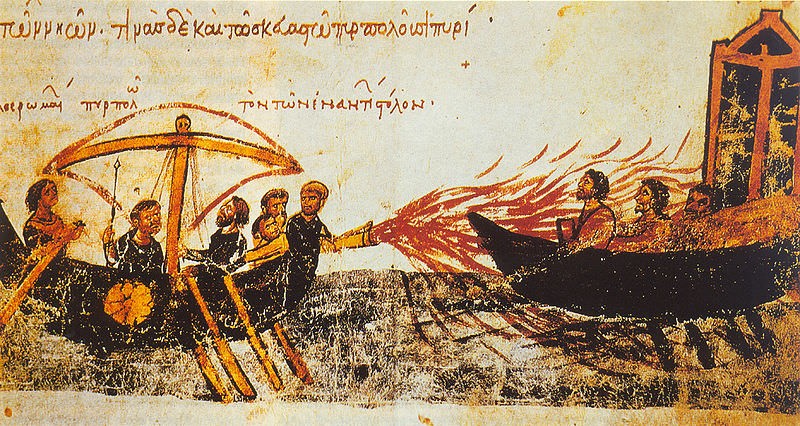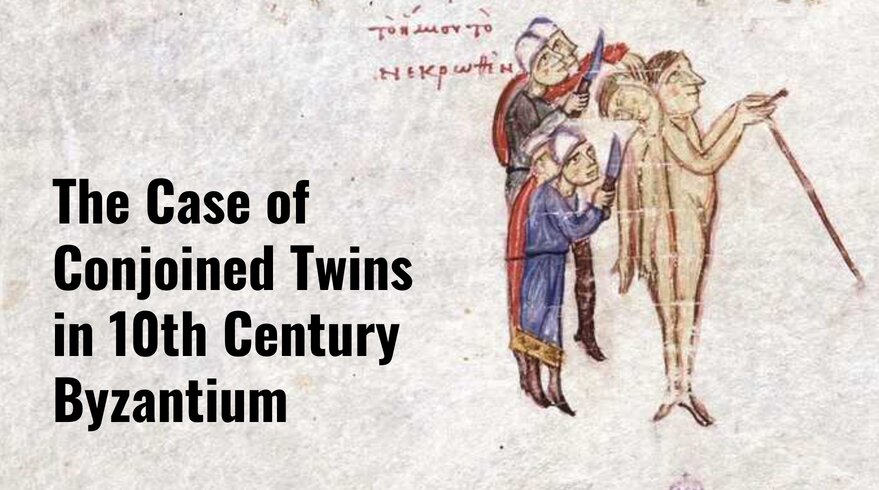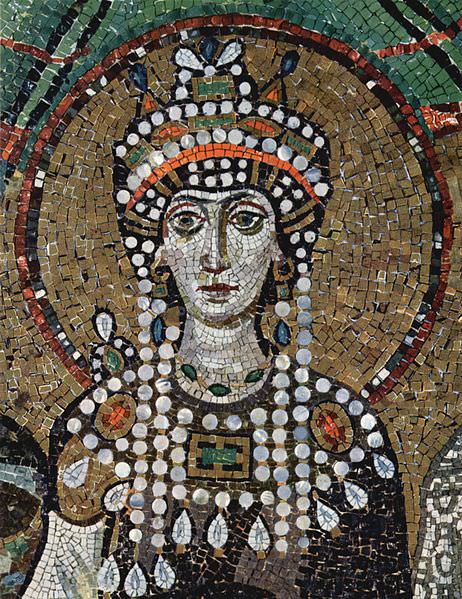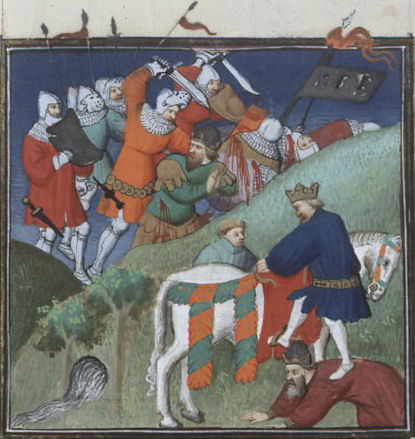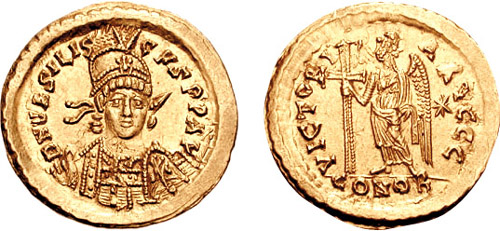The Lost Secret History of Nicetas the Paphlagonian
Although the Secret History of Nicetas the Paphlagonian has failed to reach us in its original form, it has probably shaped our knowledge of Byzantium in the ninth and early tenth centuries more than any surviving text.
Byzantine Church and Mosaic discovered in Israel
Archaeologists working for the Israel Antiquities Authority have uncovered the remains of a 1500 year old Byzantine church south of Tel Aviv. It includes a large mosaic and inscriptions in Greek.
Manuel II Palaeologus in Paris (1400-1402): Theology, Diplomacy, and Politics
The end of the fourteenth century found the Byzantine Empire in a critical state.
Integrative Medicine: Incorporating Medicine and Health into the Canon of Medieval European History
Hitherto peripheral (if not outright ignored) in general medieval historiography, medieval medical history is now a vibrant subdiscipline, one that is rightlyattracting more and more attention from ‘mainstream’ historians and other studentsof cultural history.
Land and Sea Communications, Fourth–Fifteenth Centuries
The principle that the active and coordinated collaboration of nature and man is an essential requirement for the creation of a network of communications is of fundamen- tal importance.
Fireproofing of war machines, ships and garments
Incendiary missiles were in use in antiquity and developed rapidly in the Hellenistic period, and various forms of fire extinguishers were invented to deal with them.
Reading the Ancients: Remnants of Byzantine Controversies in the Greek National Narrative
In the eyes of his contemporaries, as Anna Komnene suggests in her Alexiad, Italos was a pagan wolf in the clothing of a Christian sheep, anxious to overcome Christianity in favour of Hellenic (i.e. pagan) philosophy
Using Ancient Military Handbooks to fight Medieval Battles: Two stratagems used by Alexios I Comnenos against the Normans and the Pechenegs
During the whole of his lengthy reign, Alexios I Comnenos (1081-1118) faced multiple military threats from many different opponents that seriously threatened the cohesion and the existence of the empire.
Book Review: The Walls of Byzantium, by James Heneage
To get through this maze, Heneage employs the time proven and very useful conceit of human interest at its most personal level – a love story, not merely triangular but quadrilateral, plus the ardent love of place…
Ekphrasis in the Alexiad
Ekphrasis in the Alexiad By Niki Touriki Diogenes, Vol. 1 (2014) Introduction: The historical text of the Alexiad written by Anna Komnene in the…
Byzantine medicine, genres, and the ravages of time
Byzantine medicine has never enjoyed an enthusiastic press.
Byzantine Renaissance
Byzantium soon felt like some sort of evil stepmother, locked in the West’s attic, guilty of so many crimes.
The Case of Conjoined Twins in 10th-Century Byzantium
How were these conjoined twins treated, and how did the Byzantine physicians try to separate them?
Theodora, Aetius of Amida, and Procopius: Some Possible Connections
Behind the purported facts of Theodora’s career as a common prostitute and later as empress are the hidden details of what we might call feminine pharmacology: what were the drugs used by prostitutes and call-girls in sixth-century Byzan- tium? Were there ordinary pharmaceuticals employed by such professionals to stay in business?
The last Serbian queen: Helena Palaiologina (1431- 1473)
Serbo-Byzantine marriages had occurred many times in the past years, when the Empire was still vast and powerful.
The Commercial Map of Constantinople
The commercial topography of Constantinople was in part determined by the fact that it was a sea-bound city on seven hills, making access from the port to the forum and other commercial premises a key necessity in urban development.
Medieval Byzantine Magical Amulets and Their Tradition
A diverse yet distinctive group of magical amulets has periodically attracted the attention of scholars from Renaissance times to the present. The amulets take many forms, including engraved gems and cameos, enamel pendants, die-struck bronze tokens, cast or engraved pendants of gold, silver, bronze, and lead, and rings of silver and bronze.
Illustrated Octateuch Manuscripts: A Byzantine Phenomenon
Illustrated Octateuch Manuscripts: A Byzantine Phenomenon John Lowden The Old Testament in Byzantium: Selected papers from a symposium held Dec. 2006, Dumbarton Oaks Abstract…
How important was the Battle of Manzikert in 1071 to the Rise of the Seljuk Turks?
The Battle of Manzikert has received relatively little study in modern Western academia, and the majority of both primary and secondary sources have not been translated
The Role of Christian Spirituality in 13th Century Interpretations of the Fall of Constantinople
Since the focus of the conflict between the crusaders and Constantinople changed from obtaining transportation to Jerusalem to a religious war against the people of Constantinople, it is critical to understand the role of relics in pilgrimage and the concept of how relics were understood to be translated from one owner to another, i.e., furtum sacrum.
The City and the Cross: the image of Constantinople and the Latin empire in thirteenth-century papal crusading rhetoric
This paper examines the way papal rhetoric made use of the image and reputation of the city of Constantinople in order to legitimise and incite support for its crusading calls for the defence of the Latin empire after 1204.
Basiliscus the Boy-Emperor
Under the year 475 Victor recounts a unique version of the last days of the young emperor Leo II, the son of Zeno and Ariadne, grandson of the emperor Leo I and his wife Verina.
Byzantine golden treasures discovered in Jerusalem
Archaeologists working at the foot of the Temple Mount in Jerusalem have discovered a large haul of treasure from the remains of a Byzantine-era building
Manuel II Palaiologos: Interpreter of dreams?
Discussion on the origin of dreams and the art of dream interpretation always fascinated the Byzantines and other medieval people as it is evident, not only within the numerous texts on the subject, but also in hagiographical and historiographical sources.
The Search for the Past in Byzantium around the Year 800
The Search for the Past in Byzantium around the Year 800 Ihor Ševčenko Dumbarton Oaks Papers, Vol. 46, Homo Byzantinus: Papers in Honor…

